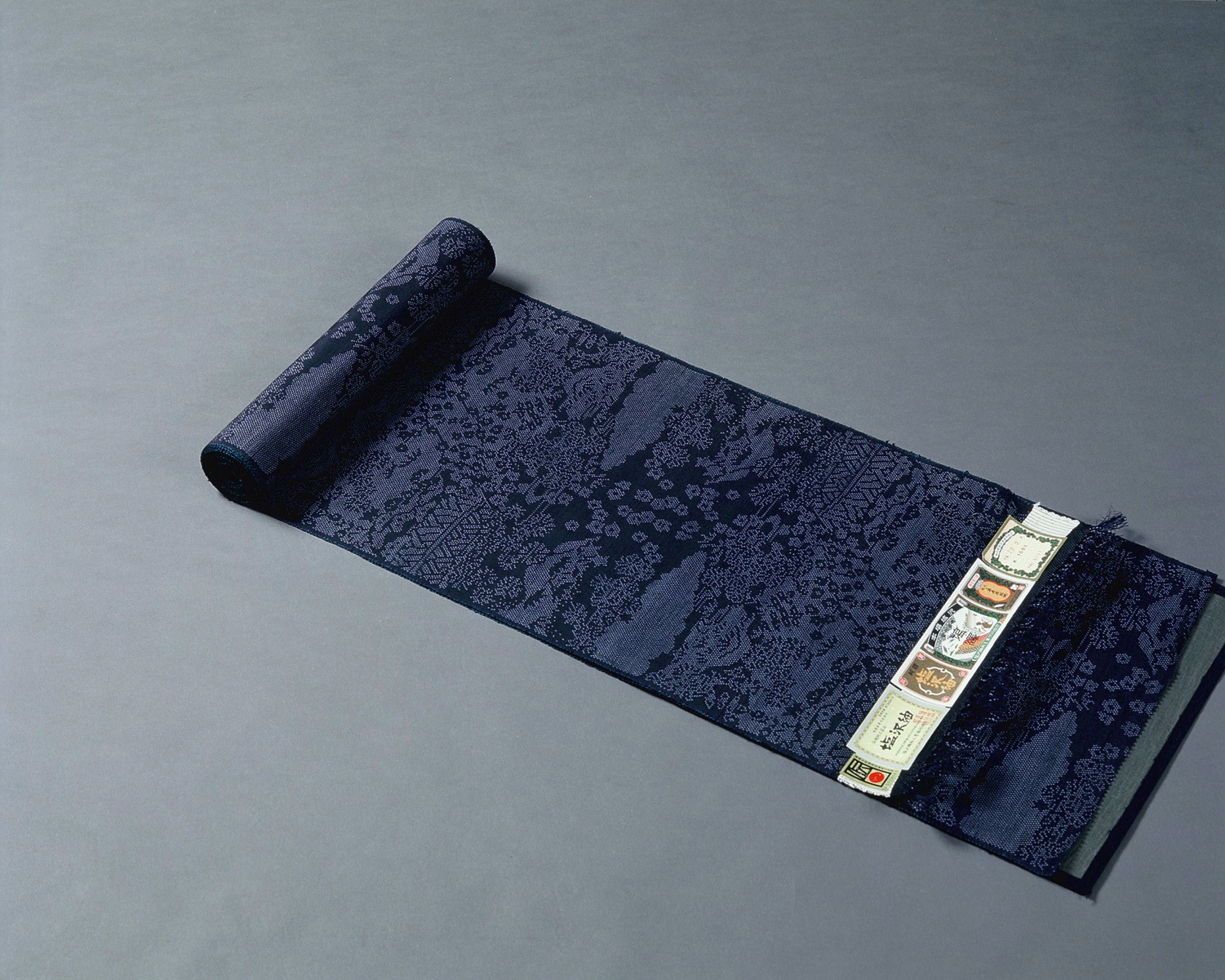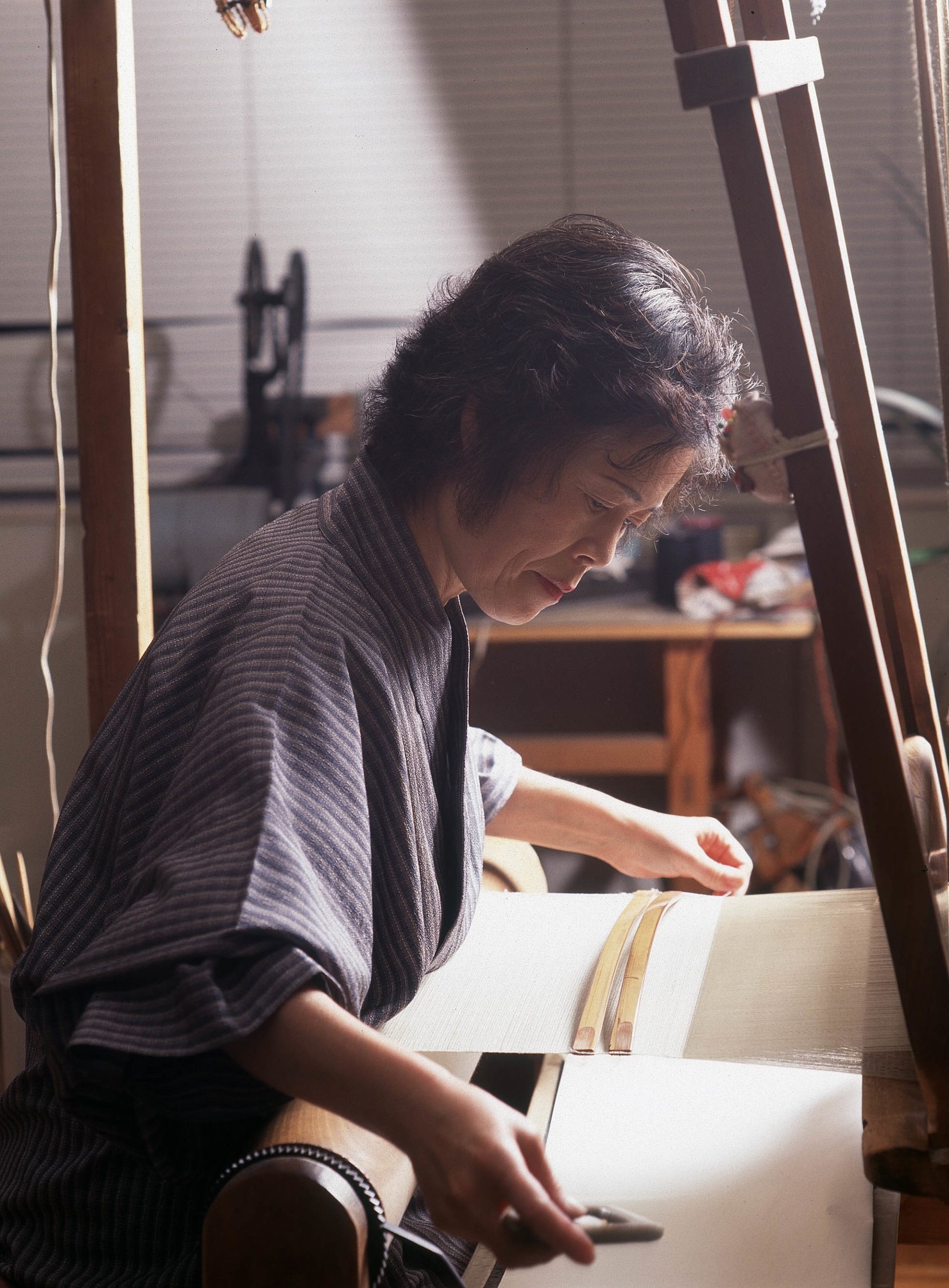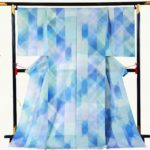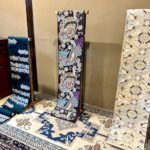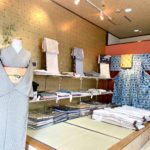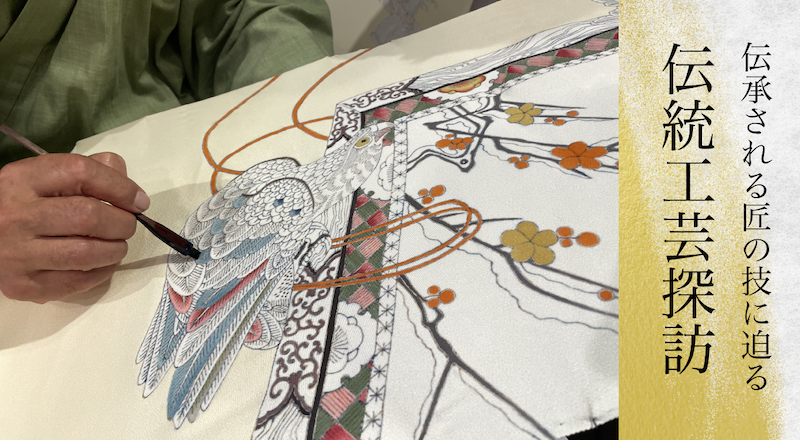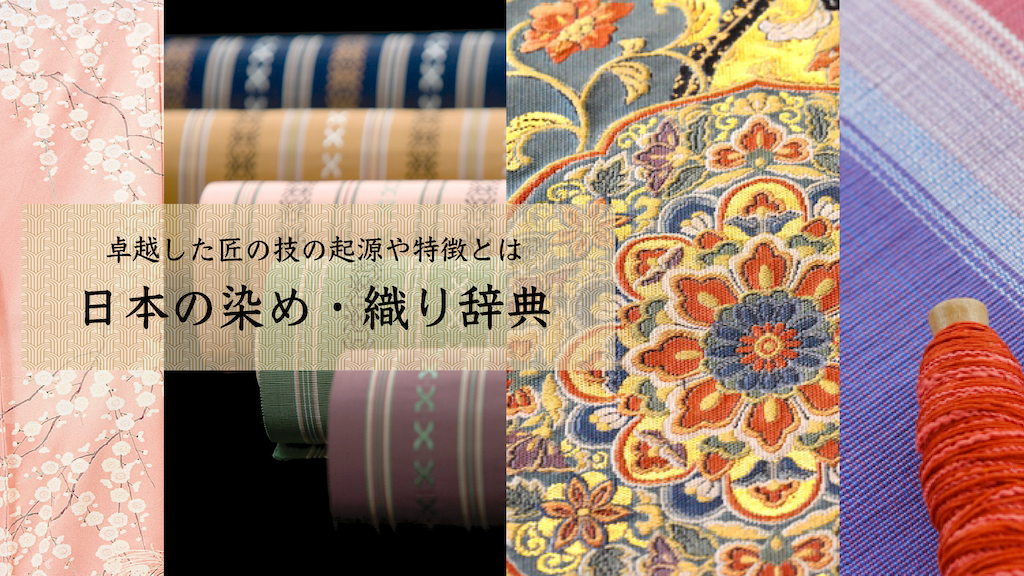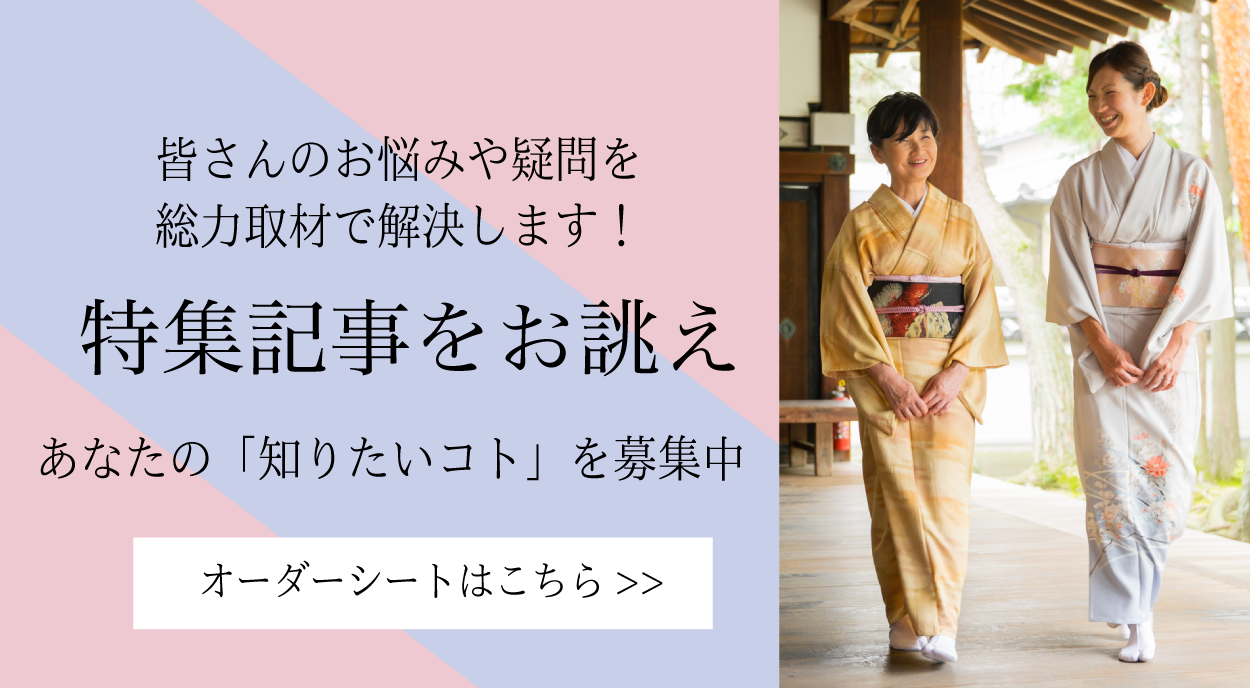塩沢紬
Pronunciation: Shiozawa-tsumugi
Production area: Minamiuonuma City, Niigata Prefecture
Shiozawa-tsumugi is a silk textile woven in Minamiuonuma City. It is said to have originated in the mid-Edo period, when the techniques of Echigo Jofu, woven since the Nara period, were adapted into silk weaving. Using raw silk and tama silk for the warp and handspun floss silk and raw silk for the weft, Shiozawa-tsumugi is prized for the softness and sheen unique to floss silk. Its hallmark lies in its fine Kasuri (ikat) patterns, meticulously aligned between warp and weft threads. The designs include Kagasuri (mosquito-dot ikat), Jujigasuri (cross ikat), and Kikkogasuri (tortoiseshell ikat). In 1975, Shiozawa-tsumugi was designated a Traditional Craft of Japan. Related weaves developed from the techniques of Echigo-jofu include Honshiozawa (Shiozawa-omeshi), known for its distinctive crimp, and Natsu-shiozawa (summer Shiozawa), a lightweight, sheer fabric ideal for summer wear.
